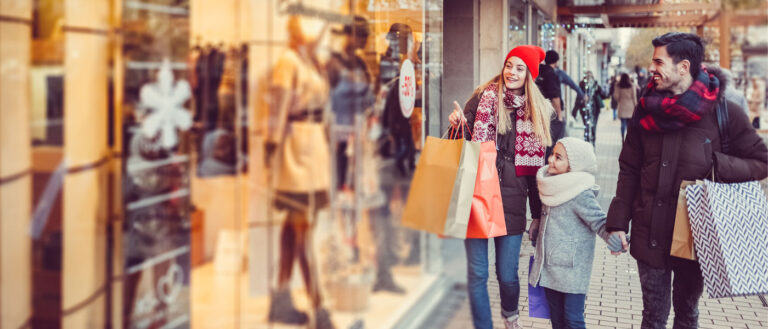For as much joy as the holiday shopping season can bring, it also can prompt anxiety. Retail environments, both in store and online, stock up with new, innovative and appealing products aimed at enticing holiday shoppers, while most shoppers grapple with the all-too-common battle between limited means and unlimited wants.
Inflation and interest rates are combining this season to create more price-sensitive holiday shoppers, yet recent consumer spending studies from KPMG and Adobe indicate good news is likely ahead for them in the form of deeper discounts.

To understand more, The Daily reached out to Somali Ghosh, associate professor of marketing at Weatherhead School of Management, for insight on navigating this holiday shopping season.
“As a self-confessed shopaholic and a lifelong marketing enthusiast, I look at the consumer trends and insights before plunging into holiday shopping mode,” she said.
Read on to learn five trends Ghosh says we can expect this holiday season.
1. There will be greater online discounts and greater use of “buy now, pay later” (BNPL) financing as consumers try to spread out their holiday shopping expenses.
According to Adobe’s 2022 holiday shopping forecast, high inflation rates are likely to discourage a significant increase in online retail sales this holiday season. As a result, you can expect more online discounts aimed at battling the tight-fisted inflationary tendencies of consumers in product categories, such as electronics, sporting goods, toys and appliances. An Adweek article by Lisa Lacy notes we can expect some bigger discounts this holiday season as compared to last year.
2. We’ll see more spending on gifts but fewer gifts likely to be given.
Consumers are likely to spend more on gifts but will likely give gifts to fewer people, according to the 2022 KPMG survey. This survey further found that people plan on spending an average of $1,072, which is 6% higher than last year, and about 44% will spend between $500-$2,000. About 14% indicated they might give gifts to more people than usual.
3. You can expect more people to spend on essentials.
Most of the spending will be for essential products as compared to other discretionary and luxury products, according to the KPMG survey.
4. Early access sales, early shopping and shopping in store are all ways to avoid shipping delays.
The KPMG survey found that 46% of consumers plan to shop early to nab their desired gifts before they disappear and 35% plan on shopping online. The survey revealed that delayed shipping is a major fear factor, and the most popular solutions are shopping early or shopping in store. Early access sales through retailers like Amazon Prime are expected to encourage early shopping.
5. Cyber Monday is expected to remain the season’s biggest shopping day in 2022.
The Adobe holiday shopping forecast shows that Cyber Week (Thanksgiving through Cyber Monday) is expected to see a 16.3% share of the full season earnings. Most of the online spending is expected to be in electronics and apparel. If more shoppers are expected in this period, more discounts and deeper discounts can be expected to entice purchases, as businesses compete for customer attention and their share of the customer wallet.


